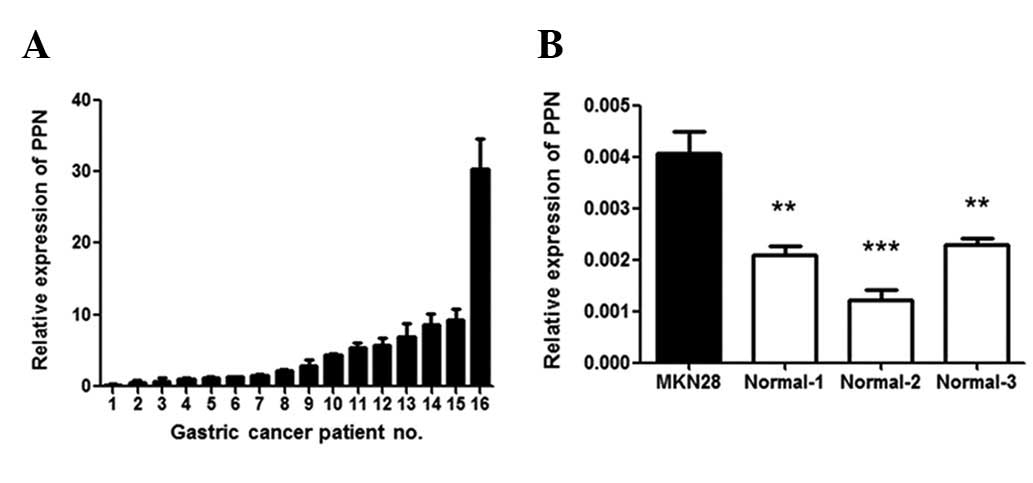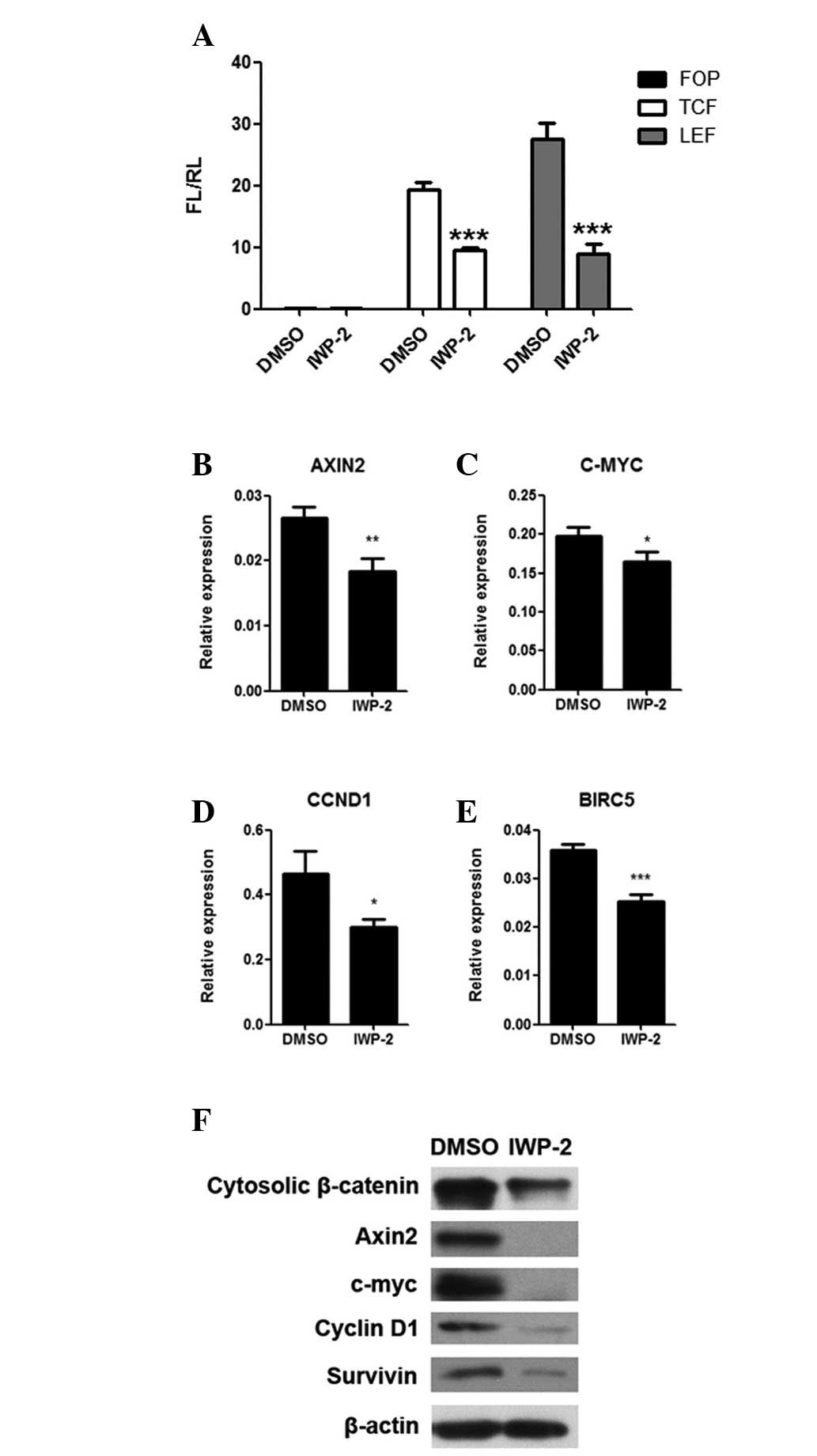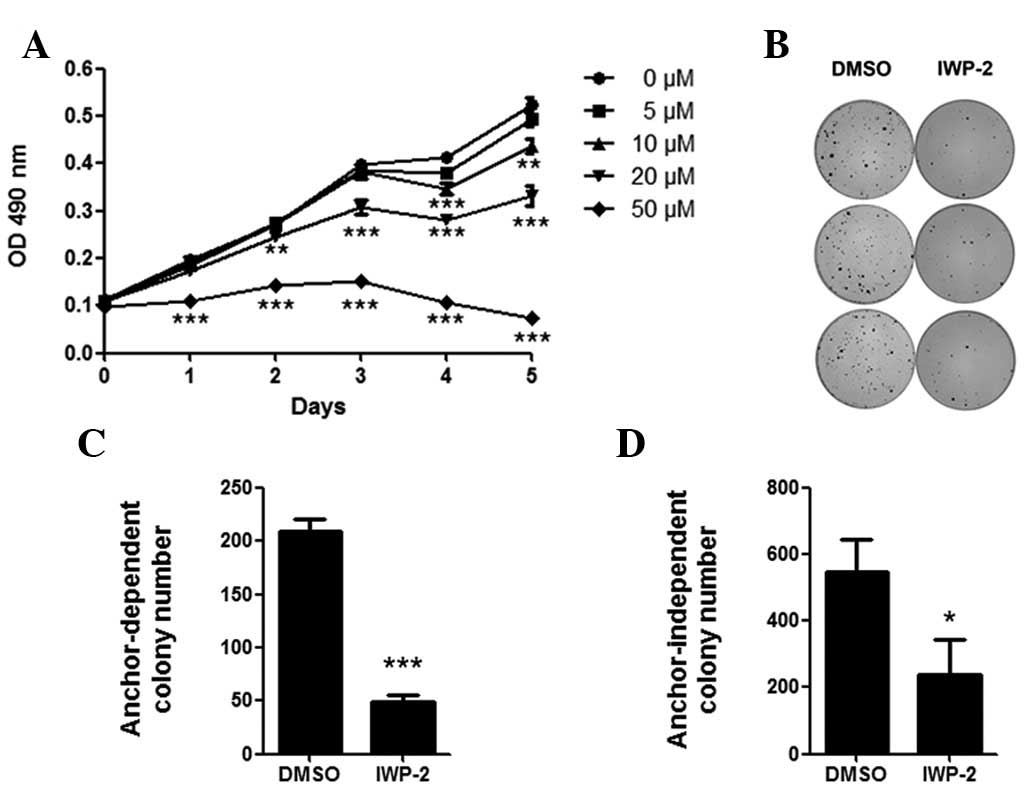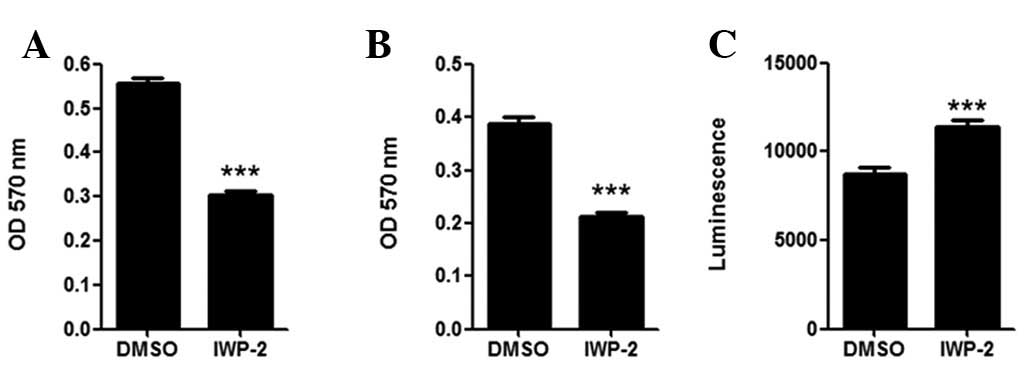|
1
|
Polakis P: Wnt signaling and cancer. Genes
Dev. 14:1837–1851. 2000.
|
|
2
|
Klaus A and Birchmeier W: Wnt signalling
and its impact on development and cancer. Nat Rev Cancer.
8:387–398. 2008. View
Article : Google Scholar : PubMed/NCBI
|
|
3
|
Clevers H and Nusse R: Wnt/β-catenin
signaling and disease. Cell. 149:1192–1205. 2012.
|
|
4
|
Kadowaki T, Wilder E, Klingensmith J,
Zachary K and Perrimon N: The segment polarity gene porcupine
encodes a putative multitransmembrane protein involved in Wingless
processing. Genes Dev. 10:3116–3128. 1996. View Article : Google Scholar : PubMed/NCBI
|
|
5
|
Hofmann K: A superfamily of membrane-bound
O-acyltransferases with implications for wnt signaling. Trends
Biochem Sci. 25:111–112. 2000. View Article : Google Scholar : PubMed/NCBI
|
|
6
|
Willert K, Brown JD, Danenberg E, et al:
Wnt proteins are lipid-modified and can act as stem cell growth
factors. Nature. 423:448–452. 2003. View Article : Google Scholar : PubMed/NCBI
|
|
7
|
Nusse R: Wnts and Hedgehogs:
lipid-modified proteins and similarities in signaling mechanisms at
the cell surface. Development. 130:5297–5305. 2003. View Article : Google Scholar : PubMed/NCBI
|
|
8
|
Galli LM, Barnes TL, Secrest SS, Kadowaki
T and Burrus LW: Porcupine-mediated lipid-modification regulates
the activity and distribution of Wnt proteins in the chick neural
tube. Development. 134:3339–3348. 2007. View Article : Google Scholar : PubMed/NCBI
|
|
9
|
Coudreuse D and Korswagen HC: The making
of Wnt: new insights into Wnt maturation, sorting and secretion.
Development. 134:3–12. 2007. View Article : Google Scholar : PubMed/NCBI
|
|
10
|
Chen B, Dodge ME, Tang W, et al: Small
molecule-mediated disruption of Wnt-dependent signaling in tissue
regeneration and cancer. Nat Chem Biol. 5:100–107. 2009. View Article : Google Scholar : PubMed/NCBI
|
|
11
|
Dodge ME, Moon J, Tuladhar R, et al:
Diverse chemical scaffolds support direct inhibition of the
membrane-bound O-acyltransferase porcupine. J Biol Chem.
287:23246–23254. 2012. View Article : Google Scholar : PubMed/NCBI
|
|
12
|
Takahashi-Yanaga F and Kahn M: Targeting
Wnt signaling: can we safely eradicate cancer stem cells? Clin
Cancer Res. 16:3153–3162. 2010. View Article : Google Scholar : PubMed/NCBI
|
|
13
|
Chen W, Chen M and Barak LS: Development
of small molecules targeting the Wnt pathway for the treatment of
colon cancer: a high-throughput screening approach. Am J Physiol
Gastrointest Liver Physiol. 299:G293–G300. 2010. View Article : Google Scholar : PubMed/NCBI
|
|
14
|
Jemal A, Bray F, Center MM, Ferlay J, Ward
E and Forman D: Global cancer statistics. CA Cancer J Clin.
61:69–90. 2011. View Article : Google Scholar
|
|
15
|
Yang L: Incidence and mortality of gastric
cancer in China. World J Gastroenterol. 12:17–20. 2006.
|
|
16
|
Du R, Xia L, Sun S, et al: URG11 promotes
gastric cancer growth and invasion by activation of beta-catenin
signalling pathway. J Cell Mol Med. 14:621–635. 2010.PubMed/NCBI
|
|
17
|
Ganesan K, Ivanova T, Wu Y, et al:
Inhibition of gastric cancer invasion and metastasis by PLA2G2A, a
novel beta-catenin/TCF target gene. Cancer Res. 68:4277–4286. 2008.
View Article : Google Scholar : PubMed/NCBI
|
|
18
|
Zhang H and Xue Y: Wnt pathway is involved
in advanced gastric carcinoma. Hepatogastroenterology.
55:1126–1130. 2008.PubMed/NCBI
|
|
19
|
Mo ML, Chen Z, Li J, et al: Use of serum
circulating CCNB2 in cancer surveillance. Int J Biol Markers.
25:236–242. 2010.PubMed/NCBI
|
|
20
|
Chen Z, Fan JQ, Li J, et al: Promoter
hypermethylation correlates with the Hsulf-1 silencing in human
breast and gastric cancer. Int J Cancer. 124:739–744. 2009.
View Article : Google Scholar : PubMed/NCBI
|
|
21
|
Li J, Mo ML, Chen Z, et al: HSulf-1
inhibits cell proliferation and invasion in human gastric cancer.
Cancer Sci. 102:1815–1821. 2011. View Article : Google Scholar : PubMed/NCBI
|
|
22
|
Chen Z, Li J, Li QS, et al: Suppression of
PPN/MG61 attenuates Wnt/beta-catenin signaling pathway and induces
apoptosis in human lung cancer. Oncogene. 27:3483–3488. 2008.
View Article : Google Scholar : PubMed/NCBI
|
|
23
|
Zhang L, Hou Y, Ashktorab H, et al: The
impact of C-MYC gene expression on gastric cancer cell. Mol Cell
Biochem. 344:125–135. 2010. View Article : Google Scholar : PubMed/NCBI
|
|
24
|
Wolfer A and Ramaswamy S: MYC and
metastasis. Cancer Res. 71:2034–2037. 2011. View Article : Google Scholar
|
|
25
|
Tamm I, Wang Y, Sausville E, et al:
IAP-family protein survivin inhibits caspase activity and apoptosis
induced by Fas (CD95), Bax, caspases, and anticancer drugs. Cancer
Res. 58:5315–5320. 1998.PubMed/NCBI
|













